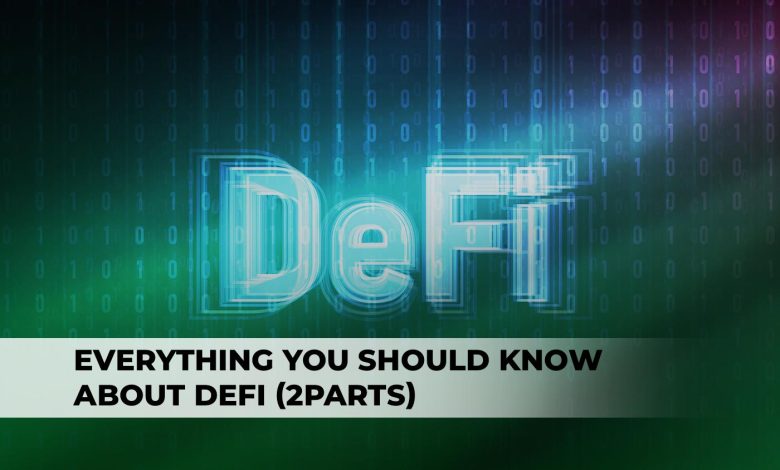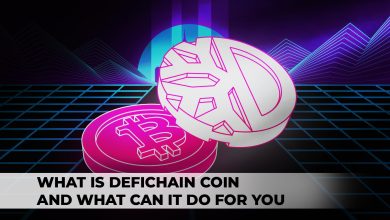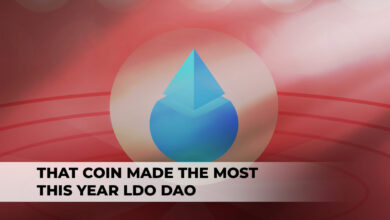
Decentralized Finance, or DeFi for short, is the term given to a range of monetary applications created utilizing blockchain technology and cryptocurrency designed to upend traditional banking institutions.
DeFi 101: The Basics and Its Differences from Traditional Banking
Decentralized Finance (DeFi) leverages the decentralized power of blockchain technology, the revolutionary system behind Bitcoin that ensures a secure and immutable record of transactions across multiple nodes. Compared to traditional centralized systems with human gatekeepers, DeFi offers far faster services while granting users direct authority over their funds. Furthermore, unlike conventional blockchain applications, which are restricted primarily to transferring value from one entity to another, DeFi unlocks numerous more intricate financial use cases due to its flexibility and scalability.
In traditional banking, when you buy coffee with a credit card at the cafe, an intermediary entity is positioned between you and the vendor, holding control over this exchange while also having access to log it on its personal ledger. With cryptocurrency, though, these bureaucracies are absent entirely.
Not only do huge corporations oversee direct purchases, but they also control collections of financial applications such as loans, derivatives trading, crowdfunding, insurance, and more. One of the top benefits of decentralized finance is that eliminating middlemen from all kinds of transactions becomes a reality. Before it was known as DeFi (decentralized finance), this idea would have been referred to simply as “open finance.”
Most DeFi Applications Are on Ethereum
Ethereum, the globe’s second most significant cryptocurrency network, has firmly established itself as a frontrunner in decentralized finance applications. This platform stands out from Bitcoin because it is much simpler to use for constructing other more intricate distributed applications beyond basic transactions. These even incorporate financial usages highlighted by Vitalik Buterin at the original launching of Ethereum back in 2013 through its white paper.
Ethereum’s platform for smart contracts enables immense versatility – transactions are automatically executed if predetermined conditions are satisfied. Solidity, one of the programming languages developed by Ethereum, is made exclusively to build and deploy these sorts of smart contracts. For example, a user could script a contract that stipulates their money will be sent to someone else next Tuesday only if weather.com records temperatures above 90°F on that day! Revolutionizing finance, Ethereum’s smart contracts open up a world of possibilities and applications. With the upcoming Ethereum 2.0 upgrade aimed at tackling scalability issues, an array of DeFi programs are running on this blockchain network – some of which we explore below:
The most widely used types include:
- Decentralized exchanges (DEXs): Decentralized exchanges provide a secure avenue for users to trade their funds, be it U.S. dollars in exchange for bitcoin or ether exchanged with DAI. Decentralized Exchanges (DEXs) have become the preferred option due to their innovative technology that connects buyers and sellers directly while eliminating an intermediary’s ability to access user money.
- Stablecoins: To protect against the noticeable volatility of cryptocurrency, a stablecoin is designed to tether its price to that of an established asset, such as the dollar or euro.
- Lending platforms: By utilizing smart contracts, these platforms eliminate the need for traditional intermediaries such as banks, streamlining lending processes and providing a more seamless user experience.
- “Wrapped” bitcoins (WBTC): The WBTC system enables users to transmit bitcoin directly from the Bitcoin network into Ethereum’s DeFi environment. This technology allows individuals to generate interest on their stored bitcoins through decentralized lending platforms.
- Prediction markets: The potential of decentralized prediction markets has surged in recent years, allowing users to bet on the outcome of future events, such as elections or football matches (soccer for our American friends), without any intermediaries. By eliminating middlemen, these DeFi versions of traditional prediction markets offer a more secure and efficient way to engage with this type of activity.

Not only have these apps come about, but new DeFi ideas and concepts are being generated around them as well:
- Yield farming: Yield farming is the process of depositing your crypto assets into a decentralized finance (DeFi) platform to receive rewards in the form of interest payments and additional staked cryptocurrency.
- Liquidity mining: Yield farming has been the talk of the town lately, and DeFi applications are making it even more appealing by offering users free tokens.
- Composability: With their open-source code publicly available, DeFi apps provide users with the ability to “compose” applications by using its building blocks. In other words, these programs are like Legos—users can join them in various ways and create something entirely new. Another way of putting composability is to say that DeFi apps are like Legos- the renowned toy blocks children use to build structures and vehicles. Equally, this money “Legos” can be snapped together to create new financial products.
Lending Platforms: Think These Are Banks, But “A Little” Different
If you’re looking to join the crypto-lending market, Compound is one of the leading platforms in decentralized finance that connects lenders and borrowers. Not only can users borrow cryptocurrencies with near-instant access to funds, but they can also receive profitable interest rates when offering their own loans. The platform’s algorithmically calculated rates are designed to adjust depending on borrowing demand – meaning if more people want a cryptocurrency, then higher returns for lenders will benefit from increased interest rates.
DeFi lending operates on a collateral-based system, where users have to provide their Ether (the token that powers Ethereum) as security for taking out the loan. This eliminates the need for identity or credit score verification which is generally required in conventional loans.
“You Mentioned Stablecoins. What Are They?” Let Us Explain
If you’re looking for a more predictable form of DeFi investments, stablecoins may be the right option. These cryptocurrencies are pegged to non-cryptocurrencies like U.S dollars to keep their prices steady and provide “stability.” Some popular examples include Tether (USDT), USD Coin (USDC), Binance USD (BUSD), and Dai (DAI). With these coins, you can rest assured that your savings will remain safe even if the crypto market experiences sudden changes.
What About Prediction Markets?
Ethereum is home to some of the oldest decentralized finance (DeFi) applications, including prediction markets – an innovative concept where users wager on various outcomes. For instance: “Will Donald Trump win the 2020 presidential election?” or “Will Bayern Munich win the Champions League cup?” With these markets, you can make educated guesses and potentially cash in big when your predictions come true!
Participants in prediction markets are, of course, looking to make money. Yet surpassing the predictability level of conventional methods such as polling is another potential result – with successful centralized prediction markets like Intrade and PredictIt being good examples. With DeFi technology having capabilities that could encourage more people to predict market activities (typically not approved by governments), there has never been a better time for decentralized predictions!




